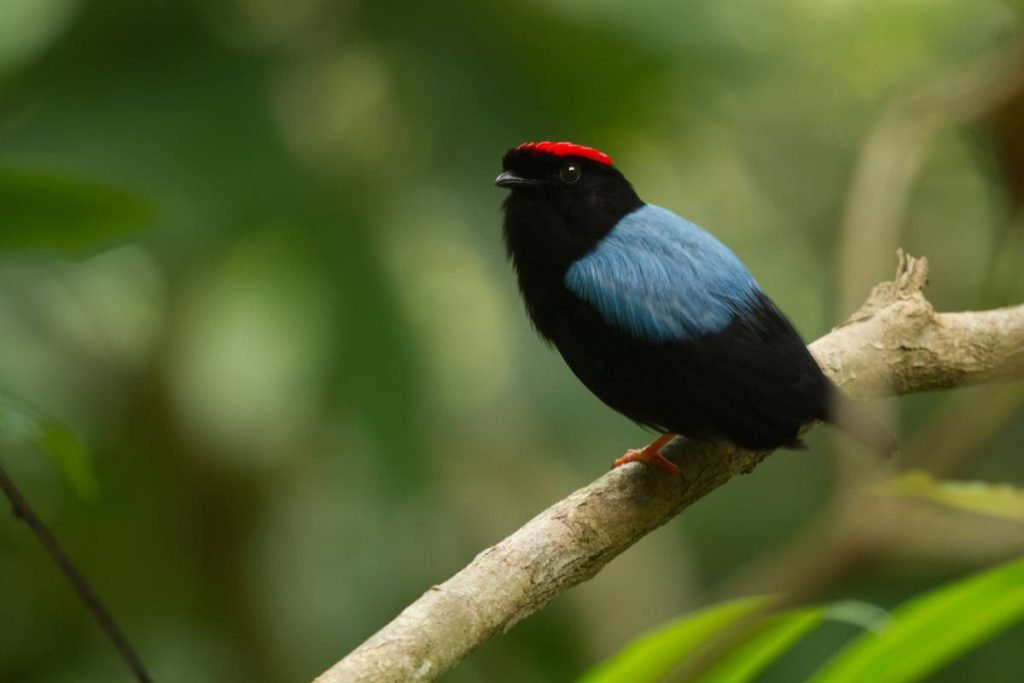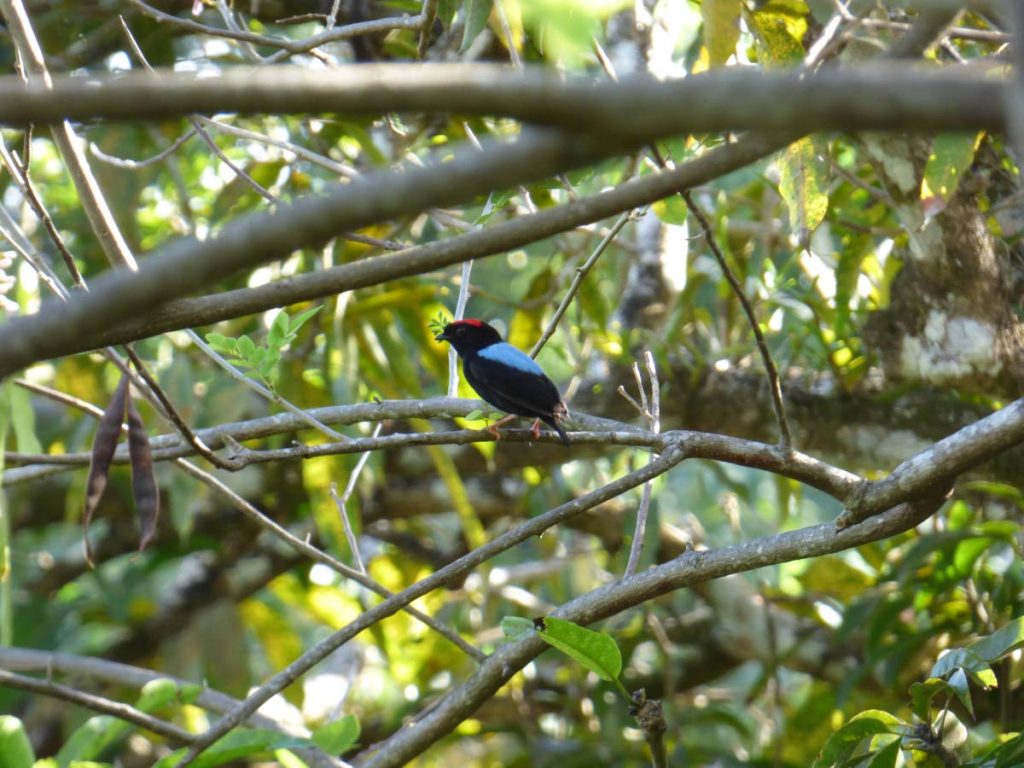Meet Tobago's dancing bird, the blue-backed manakin

When it comes to putting on a show, the blue-backed manakin (Chiroxiphia pareola) can’t be beaten.
Adult male manakins perform a special dance to attract females. The dance, often performed in pairs, consists of male manakins jumping over each other in an alternating manner.
You can find these birds preparing for their performance in a lek (area where males gather to perform).
Male manakins love choosing trees with curved branches for their leks.
Birdwatcher Newton George told Newsday Kids, “Once these birds establish a lek, it can exist for years unless there are disturbances.
“There’s a lek I know which has been there for the past ten years or so.”
George is an ornithologist, which means he studies birds. From 1971-1981, George was the custodian of the island of Little Tobago and during that time, he created viewpoints for birders to study the island’s birds.
If you want to see male manakins practising their dance, it’s important to know where you can find them, how they look and what time they practise.
For starters, blue-backed manakins are only found in Tobago.
A fruit eating bird, these birds can usually be seen on fruit trees.

George said the body of an adult male manakin is black with a blue back and a spot of red on their head. Adult female manakins are green. While young males are the same colour as females, they are often distinguished by a spot of red on their heads.
George said adult male manakins can be found practising their dances, in their leks, between 8 am and 2 pm daily.
But while male manakins spend most of their time practising their dance moves throughout the year, only one wins on the “dance floor” when it’s time to mate in March.
George explained, “What goes on is that the two males will call for the female.

“When the female comes in, the two males will do the display (dance) and the female will choose one.”
But it’s not all competition between male manakins.
While practising their dance, adult male manakins will adopt juvenile males to teach them the dance.
Apart from its outlandish choreography, George said the bird also makes up to nine different calls.
Thankfully, blue-backed manakins are not under threat from hunters and we should keep it that way.


Comments
"Meet Tobago’s dancing bird, the blue-backed manakin"